Subjects:
- Lock cylinder
- Situation 1: key is in the cylinder lock
- Situation 2: key has been removed from the cylinder lock
- Repair
Lock cylinder:
When the correct key is inserted into a lock cylinder, the key can be turned. The control element on the back of the lock cylinder gives an open/close command to the door lock. The lock cylinder cannot rotate with the wrong key. That of course sounds very logical. This page explains how the shape of the key bit determines whether the lock cylinder can twist in the house.
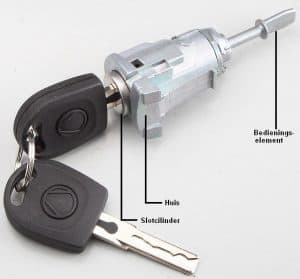
Situation 1: key is in the cylinder lock:
The image below shows a lock cylinder, containing a key bit of a key. The black slats have now moved into a certain position based on the shape of the key bit. The top and bottom are now smooth. The slats now do not protrude at the top and bottom.
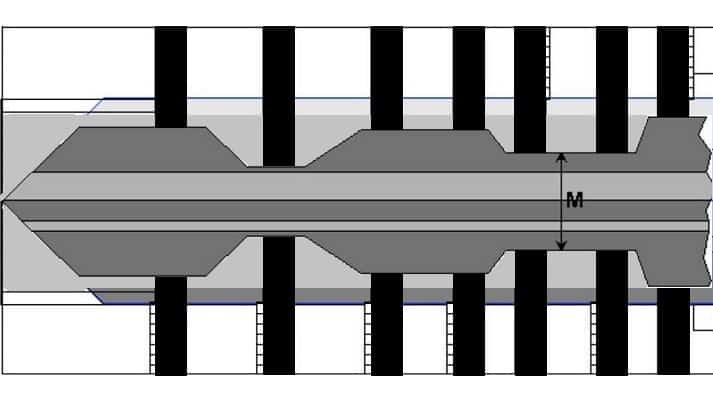
The picture on the right shows the front view of the lock cylinder. The outer round part is the housing and the dark inner part is the lock cylinder. The white areas at the top and bottom are the spaces where the slats can come when the key is removed, or when the wrong key is inserted in the cylinder. In this case, with the right key (see the picture above), the slats are in the cylinder lock. These do not protrude, so the lock cylinder can twist in the housing.
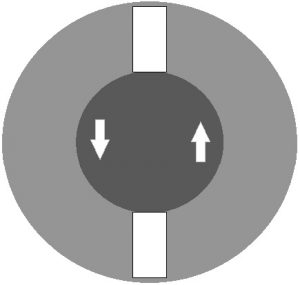
Situation 2: key has been removed from the cylinder lock:
In the picture below, the key has been removed from the lock cylinder. The springs of the slats ensure that the slats are in a certain position.
One moves up and the other down. At this point, the cylinder lock is blocked.
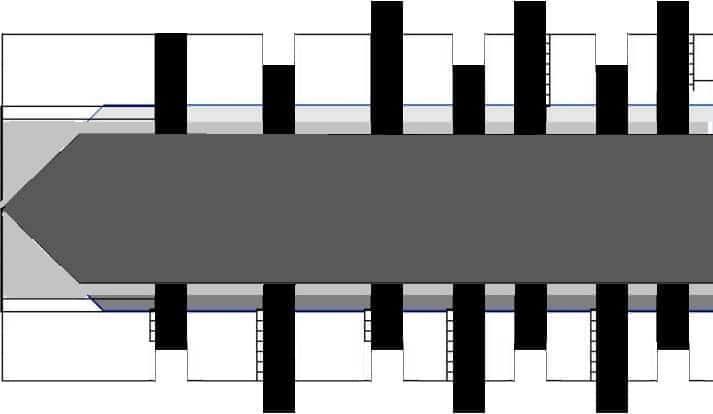
Because the slats have taken a different position after the key has been removed from the lock, the lock cylinder can no longer rotate in the housing. The black slats in the image above have been moved to the outside by the internal springs. These are now stuck between the gray walls of the house. The lock cylinder can now no longer rotate in the housing. Only when the key has been reinserted into the lock cylinder do the black slats move back in and the cylinder can turn in the housing again.
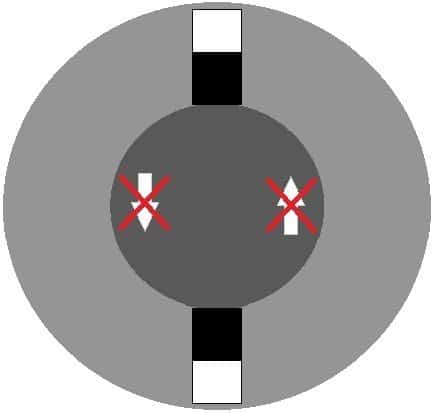
Repair:
A lock cylinder can be replaced separately. When the housing is disassembled, the lock cylinder can be removed from the housing. The slats each have their own size, tailored to the key bit. When these slats are interchanged, they no longer correspond to the key bit and the lock cylinder can no longer be turned.
By taking an empty lock cylinder and sliding each slat into the cylinder, it can be determined by inserting the key whether a larger or smaller slat should be mounted. When the key is inserted into the lock cylinder, the slat must be exactly flush with the cylinder (as shown in the top picture). By fitting a different slat every time, you automatically get the right one. This is a time consuming task, but it is certainly possible.
